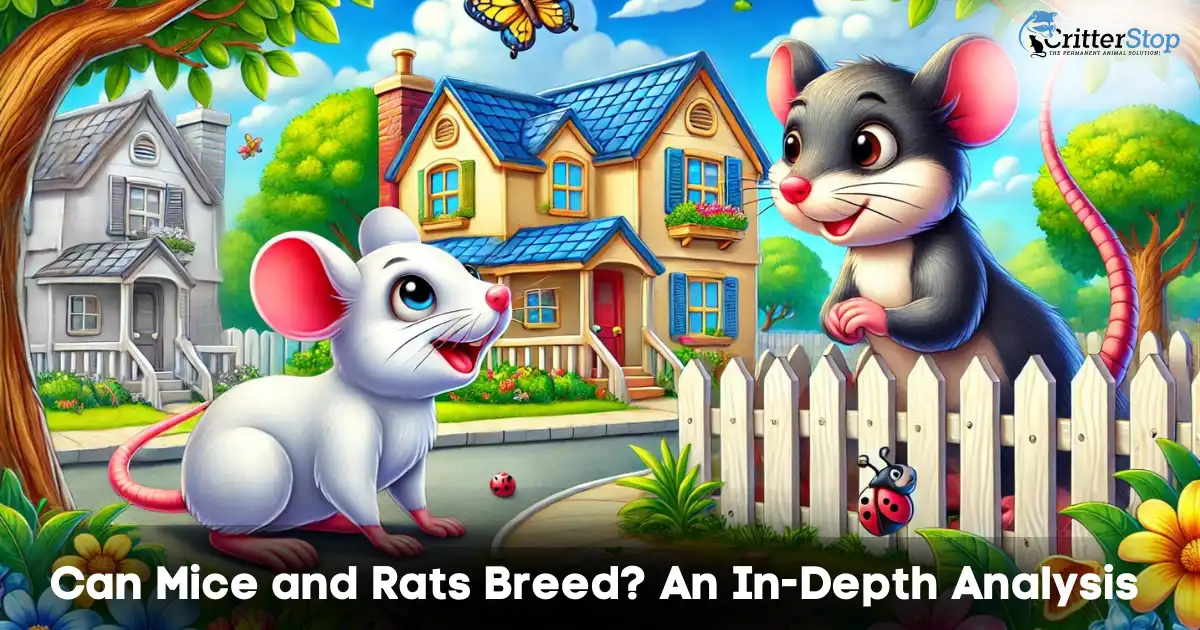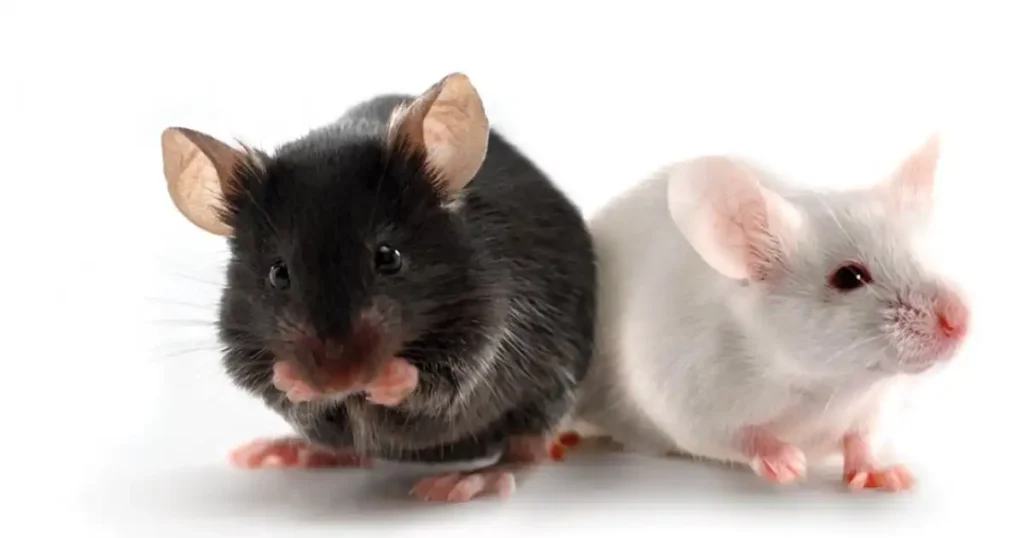
When discussing the behavior and reproduction of rodents, one common question arises: can mice and rats breed together? This question is of particular interest not only to pest control professionals but also to homeowners and researchers. In this article, we will provide a comprehensive exploration of the reproductive habits of mice and rats, dispelling myths and offering detailed insights into these prolific breeders.
While the notion of mice and rats interbreeding might seem plausible given their similarities, it's essential to understand the fundamental biological differences that make such crossbreeding impossible. This article aims to shed light on these distinctions, delve into the unique reproductive cycles of each species, and provide practical information for those dealing with rodent infestations. By the end, readers will have a clear understanding of why mice and rats cannot produce hybrid offspring and will be equipped with knowledge to manage and prevent these pests effectively.

Before delving into the specifics of breeding, it is crucial to distinguish between mice and rats. Mice (Mus musculus) and rats (Rattus norvegicus and Rattus rattus) are different species with distinct characteristics. Mice are generally smaller, with pointed noses, large ears, and long tails. Rats are larger, with robust bodies, blunt noses, and shorter tails in proportion to their size.
The primary reason mice and rats cannot interbreed is due to genetic incompatibility. Mice and rats belong to different genera and species, which means their genetic makeups are not compatible for producing offspring. The chromosome structures of mice and rats differ significantly, making successful mating and reproduction between these two species biologically impossible.
The reproductive systems of mice and rats are also adapted to their respective species. Mice have a shorter gestation period, typically around 19-21 days, and can give birth to litters ranging from 6 to 12 pups. In contrast, rats have a slightly longer gestation period of about 21-23 days, with litter sizes ranging from 6 to 20 pups. The differences in their reproductive physiology further prevent crossbreeding.
Mice are known for their rapid reproductive rates. Female mice reach sexual maturity at around six weeks of age and can reproduce year-round. Mating behavior in mice involves a series of courtship rituals, including scent marking and vocalizations. Male mice often compete for the attention of females, leading to multiple mating partners and ensuring genetic diversity within populations.
Rats also exhibit high reproductive rates, with females reaching sexual maturity at around eight to twelve weeks. Rat mating behavior is characterized by complex social interactions, including dominance hierarchies and communal nesting. Female rats can mate with multiple males, leading to mixed paternity within litters.

One of the common myths is that mice and rats can produce hybrid offspring. However, as discussed earlier, the genetic differences between these species make such hybrids impossible. Any claims of hybrid rodents are likely due to misidentification or misinformation.
Another misconception is that mice and rats might interbreed in captivity. Even under controlled conditions, such interbreeding does not occur due to the aforementioned genetic and physiological barriers. Researchers and pet owners should be aware that housing mice and rats together will not result in hybrid litters.
Understanding the reproductive habits of mice and rats is crucial for effective pest control. Given their high reproductive rates, controlling populations requires consistent and strategic efforts. Measures such as trapping, baiting, and environmental modifications are essential to manage and reduce infestations.
Effective pest control strategies must be tailored to the specific species. Since mice and rats have different behaviors and ecological niches, combining methods that address their unique habits is essential. For example, mice are more likely to infest homes and structures, while rats may prefer outdoor environments and sewers.
One of the most effective ways to prevent rodent infestations is by sealing potential entry points. Mice can squeeze through openings as small as a dime, while rats can enter through holes the size of a quarter. Ensuring that buildings are well-sealed can significantly reduce the likelihood of infestations.
Rodents are attracted to readily available food sources. Proper sanitation, including secure storage of food and regular cleaning, can deter mice and rats from entering and settling in human habitats. Removing food sources is a critical component of integrated pest management.

The reproductive cycle of mice is particularly notable for its speed and efficiency. Female mice come into estrus, or heat, every 4-5 days, allowing for frequent mating opportunities. After mating, the gestation period is short, only about three weeks. Newborn mice are blind and hairless but develop rapidly, becoming independent within 3-4 weeks. This quick turnaround enables mice to produce multiple generations in a single year, significantly increasing their population density in a short period.
Rats have a slightly different reproductive cycle. Female rats also experience frequent estrus cycles, approximately every 4-6 days. The gestation period for rats is similar to that of mice, around 21-23 days. Rat pups are born underdeveloped, requiring several weeks of nurturing before they are ready to fend for themselves. However, rats tend to have larger litters, which contributes to their rapid population growth. Under optimal conditions, a pair of rats can produce hundreds of descendants in just one year.

Rodents like mice and rats play a significant role in maintaining ecological balance. They serve as prey for a variety of predators, including birds of prey, snakes, and larger mammals. Their rapid reproductive rates ensure that they can sustain these predator populations. Additionally, rodents contribute to the ecosystem through seed dispersal and soil aeration, enhancing plant growth and soil health.
While rodents are vital to ecosystems, their high reproductive rates often lead to conflicts with humans. In urban environments, large rodent populations can cause significant damage to infrastructure, contaminate food supplies, and spread diseases. Effective management and control of rodent populations are essential to mitigate these impacts and maintain a balance between wildlife and human activities.
One of the more innovative approaches to rodent control is the use of biological agents. Predators, such as cats, owls, and other raptors, are natural enemies of rodents and can help keep their populations in check. Encouraging the presence of these predators in areas prone to infestations can provide a natural and sustainable method of control.
Yes, mice can sense a cat in the house. They have a keen sense of smell and acute hearing that allows them to detect a cat's presence through scent markers and sounds. This awareness often deters mice from entering or staying in a house.
Chemical control methods, including the use of rodenticides, remain a common approach to managing rodent populations. However, the use of chemicals must be carefully regulated to prevent unintended consequences, such as the poisoning of non-target species and environmental contamination. Integrated pest management strategies often combine chemical treatments with other methods to enhance effectiveness and reduce risks.
Recent advancements in technology have led to the development of sophisticated pest control tools. Electronic traps, ultrasonic repellents, and automated monitoring systems are increasingly used to detect and manage rodent activity. These technologies offer more humane and targeted approaches, reducing the need for widespread use of poisons and traps.
Rodents are known carriers of various diseases that can be transmitted to humans, including hantavirus, leptospirosis, and salmonella. The high reproductive rates of rodents increase the risk of disease outbreaks, particularly in densely populated urban areas. Public health efforts must focus on education, sanitation, and effective pest control to minimize these risks.
Rodents can also exacerbate allergies and asthma in humans. Rodent droppings, urine, and dander are potent allergens that can trigger respiratory issues. Ensuring that indoor environments are rodent-free is crucial for maintaining public health, especially for individuals with pre-existing respiratory conditions.
Raising public awareness about rodent control and prevention is essential for community health. Educational campaigns can inform residents about the signs of infestations, effective prevention strategies, and the importance of reporting rodent activity to local authorities. Engaging the community in these efforts can lead to more comprehensive and effective control measures.
Collaborative efforts between local governments, pest control professionals, and community organizations are vital for successful rodent management. By working together, these groups can develop and implement integrated pest management plans that address the unique challenges of each community. This collaborative approach ensures that resources are used efficiently and that control measures are sustainable over the long term.
For those experiencing rodent problems, seeking professional help is often the best course of action. Critter Stop, a humane wildlife removal company with a fantastic reputation, offers expert solutions for mice and rat infestations. Critter Stop is renowned for its high-quality work and exceptional customer service, as evidenced by numerous positive customer reviews online.
Critter Stop provides comprehensive services that include:
By choosing Critter Stop, homeowners can ensure their rodent issues are resolved efficiently and humanely. Their expertise and dedication to customer satisfaction make them the top choice for rodent control in the area.
In summary, while mice and rats cannot breed with each other due to significant genetic and physiological differences, understanding their distinct reproductive behaviors and ecological roles is crucial for effective pest control and public health management. By combining advanced pest control techniques, fostering community involvement, and prioritizing public health, we can mitigate the impact of rodent populations and maintain a healthy balance between human and wildlife interactions.
For the best in rodent control services, consider contacting Critter Stop for all your mice exterminator needs.
Contact us at (214) 234-2616 to get a free estimate of our services.
Visit our Critter Library and learn more about our furry friends